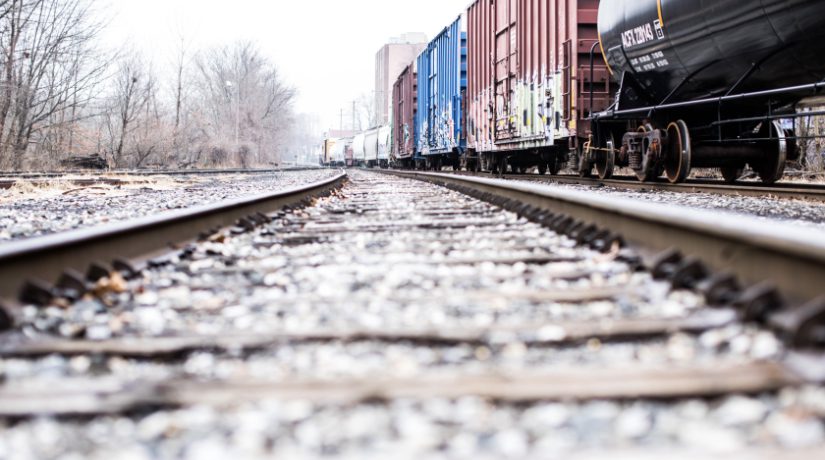In this digital age, keeping freight vehicles digitally connected while in motion has become the baseline for more efficient operations. Key questions remain: how to achieve ubiquitous connectivity; how to maximize the available bandwidth across a variety of spectrum; and what additional opportunities exist because of this enhanced connectivity?
I recently participated in an industry webinar that addressed five burning questions around keeping freight connected. The questions were flowing, and the debate was healthy.
5 Questions Answered around Keeping Freight Connected
1. What are the near-term realities of 5G coverage in North America?
5G is a moving target in North America. Each mobile network operator is building out its network utilizing different bands and plans. The C-band auction surpassed $80 billion – this shows how much carriers are willing to pay for the spectrum because they will get that money in return from deployment of 5G. With the C-band, coverage is better than other bands and throughput is better than 4G.
While there is a lot of promise in the technology, it will take very long time, probably close to a decade for 5G to be deployed across the United States.
2. How can we ensure ubiquitous coverage at a reasonable/acceptable cost?
Whether it is public cellular, private cellular or standard Wi-Fi in a maintenance yard, satellite, or a trackside solution, the combination can ensure a seamless connection anywhere in the United States, Canada and beyond. The key is to use the right connection at the right time for the right application.
Consider an accident scenario where a large amount of video needs to be streamed off the locomotive quickly. In this time critical scenario, high and low-cost connections may need to be aggregated to provide sufficient bandwidth.
Following on from that example is that costs can be kept down by being cognizant of what data needs to be transferred in real time and what can wait to be transferred until a lower cost or ‘free’ route is available – such as Wi-Fi coverage in a maintenance yard.
Consider the scenario where onboard sensors create an alert that needs to be transmitted in real time versus the totality of the sensor data that could be transmitted when the locomotive can utilize a low-cost connectivity method.
Sometimes least cost routing is most important, other times getting urgent data off-of the locomotive across multiple channels is more important. A smart combination of connection choices and application specific routes ensures ubiquitous coverage at the lowest ongoing cost.
3. How do we take advantage of new connectivity technologies, but also future-proof the investment and ensure solution longevity, since it isn’t easy to roll out new technology on thousands of vehicles?
In addition to installing active hardware components that are powerful by today’s standards and have a long mean time between failure (MTBF), installing standards-based components that will not have to be swapped out is also key. For example, choosing cellular or satellite antennas that support a wide number of bands may be slightly more expensive today, but means that other components can be upgraded without having to replace anything on the roof of the locomotive. Installing robust RF wiring to antennas and ethernet wiring to components with locking connectors, reduces trips to the cars for repairs. Installing a managed network switch during the initial installation makes the solution extensible down the line.
Active components like routers, modems, access points and switches can be upgraded, but other more passive components can last a long time without ever having to be touched and can support the solution through later upgrades if – and when – necessary.
The right solution is the one that will meet the needs of connectivity for freight for the next 5-10 years.
4. There is only so much space on the roof of a locomotive and inside for hardware, so what is the solution? How do we overcome space constraints and how do we pack more into a smaller footprint?
Tagging on to my prior comment about solution longevity, it is important to consider how many channels and frequencies an antenna can support but also how many functions that the ‘brain’ of the solution can support.
On the antenna side, using multi element antenna housings is a good way to start. There are 2×2 antennas with GPS available from several manufacturers, as well as 4×4 and 8x8s in low profile with minimum footprints. Wiring modems in a way that maximizes antenna diversity is important. Perfect diversity may just not be possible on the roof space available, but it can still be done well.
On the active hardware side, combining multiple applications onto one piece of hardware – router, modems, application server, and storage, rather than adding blades, hardware racks or other equipment can mitigate space constraints in what is already a tight space. Choosing hardware with the capability to run multiple virtual applications at the same time also helps overcome space constraints, lowers the number of points of failure, and means that in many cases future functionality can be added by software updates alone.
The core of the solution is powerful enough to virtualize multiple software applications to deliver on multiple functions.
5. With only so much space, what other applications/use cases can an onboard communications solution support?
The connectivity speed requirements for the freight rail industry are often lower than the speed that we as consumers expect or think of as the minimum.
We understand that 5-10 Mbps consistently is the next goal. And, while this may not sound like a lot of bandwidth (especially when compared to the data speeds touted by commercial networks), the situation is vastly different along the remote rail alignments across North America.
The main uses of that improved speed that I have heard are:
- Analyze sensor data and communicate alerts as needed; with bulk data offload in the yards when the data transfer costs are essentially zero
- Track geometry analysis – video or other technology
- Forward camera video recording and storage
- Cab camera video recording and storage
- Wireless hotspot – connecting handheld devices for work order reporting and other applications
- VoIP comms
- Work crew notifications
- Drone command, control
- Drone video storage and offload
- Remote train control
For more information about how the Icomera team is keeping freight connected, take a look at our latest publication, “Delivering Data On Demand”.


